14 March 2008
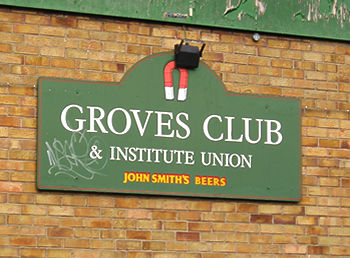
The Groves Working Men’s Club closed in October 2006, and last autumn the planning application to redevelop the site was approved.
This is one of those places that most of us pass by and take for granted, those who weren’t members. Clubs like this one are closing all over the country – as featured in a recent BBC documentary.
This club as an organisation dates from 1899, and moved here to these buildings on Penley Grove Street in 1919, so that’s several generations of people, presumably coming down here on a regular basis, as paying members.
These clubs, so important in the early 20th century, are struggling to survive in the early 21st century.
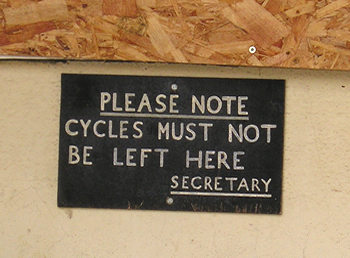
It always feels a bit strange to be wandering around abandoned places that never meant anything to you personally but that you know meant a lot to others. I wanted though to record the buildings, signs and details before they’re gone.
It always seems particularly sad when the place that’s closed and about to be bulldozed is a place where people used to socialise, any pub or club with a long history. If a home is knocked down, it might affect a small number of people who lived there. If a club or pub or other social venue is knocked down, it has a far wider impact.
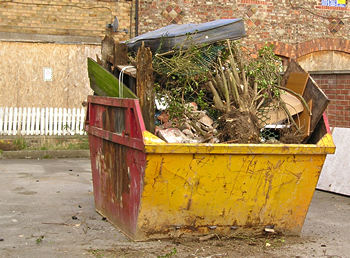
It was all rather sad – there’s a skip at the front full of rubbish, and concrete already being broken up, and developers signs about the risk of asbestos on site. The place has been cleared out, everything personal stripped from it.
But in the middle of all this is an incongruous flowerbed. It’s full of weeds – a fine crop of dandelions – but behind it is a white painted picket fence, paint peeling now.
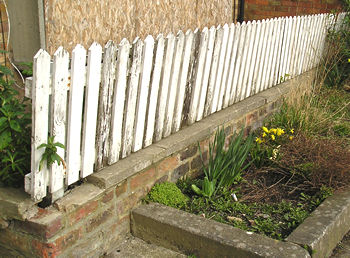
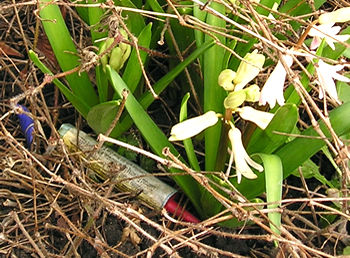
And struggling up through the dandelions and empty cigarette packets and a remnant from last year’s fireworks are hyacinths and daffodils. Someone planted these once. When I see plants in unexpected places, I always wonder who planted them, and what they were hoping – whether they brightening their own view – perhaps at their place of work – or perhaps it was an altruistic act for general cheering and brightening.
These bulbs will be chucked in a skip soon along with everything else. Maybe someone local should go along with a spade and dig them up and save them.
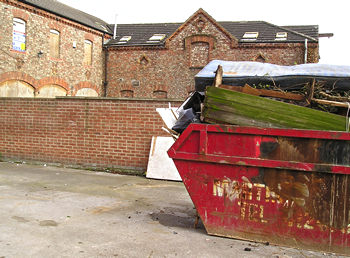
I was trying to work out which of the many buildings were part of the club itself, as it seemed that the site held many buildings from different times, with a couple at the back quite substantial and with fancy bits of brickwork detailing, probably once elegant – before their windows were boarded up. I’m not sure whether all these buildings were part of the club. The older ones to the east of the site seem to have been part of an earlier planning application, but I couldn’t find any further details.
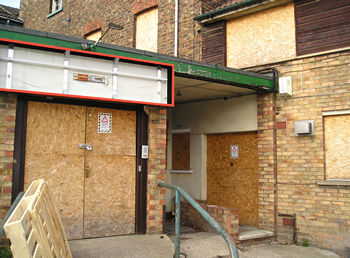
I often find that what seems like a simple and quick addition to this site turns into a major time-consuming thing. This was the case with this page. After noticing the gatepost (see below), I wanted to try to find out what the older buildings had been before. I ended up looking at old census returns for Penley Grove Street, and historical directories, and books on local history, and the planning application documents from last year. And then some information about Working Men’s Clubs in general, and in the end it took much longer than intended, and I had "information overload".
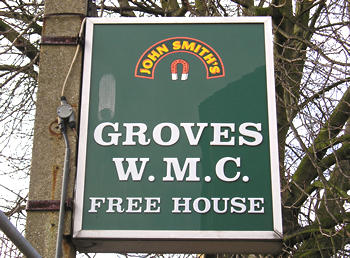
The sign above says, under the club’s name, "FREE HOUSE". I didn’t think anything of it when taking the photo, and I know that the freedom referred to is to do with beer and breweries and not being tied to a particular one. But before I understood such things, I remember when I was young thinking that these pubs and clubs that had Free House on their signs sounded rather cool. Though after checking with an older and wiser person I found that it didn’t after all mean that they gave away the beer for free.
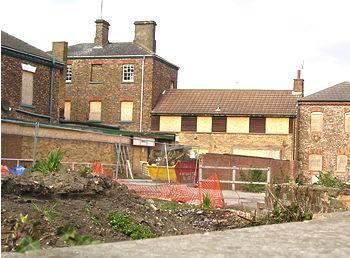
Planning application documents are difficult to read properly, particularly on a computer screen, particularly when you didn’t really want to be going into that level of detail in the first place. However my attention was drawn to the issue of bats. The buildings were apparently checked for bats before approval was granted. I’ve come across this before in planning documents, and wonder if there’s a special bat-checking department – a Batman perhaps. Anyway, he and Robin didn’t find any, apparently.
However the application approval, in its terms and conditions states: “Bats: Should bats be located during building works, the work must stop and English Nature should be consulted.". It’s rather heartwarming that there’s protection for bats, but then I’m a soppy old sod. And I can just imagine the heartwarming effect The Bat Clause has on the builders who are wanting to get the job done. "Oh b****, mate, I’ve just found a load of **** bats up here. Where’s that **** number for the English Nature Batphone?"
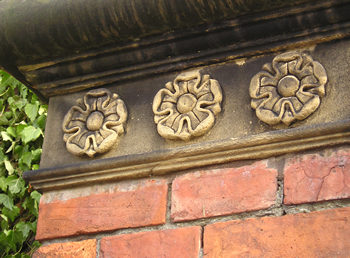
It looks like the conditions also include protection for the trees at the front of the site. Trees are another thing we take for granted, in general. There are in fact so many things we don’t notice. Maybe that’s changing now more of us are wandering around with cameras. When you’re out with a camera looking for photos – all kinds of things seem to come to the fore, things not noticed before. As I was leaving the site, I noticed this fantastic old gatepost, just there at the site entrance, with its old stone flowers – stone roses perhaps. Why such a grand old thing, stuck here, like the kind of gatepost you get to rather impressive old dwellings?
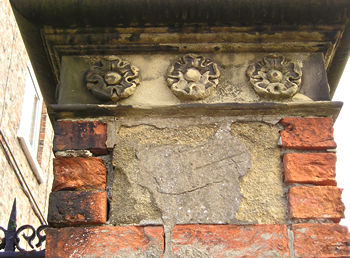
Apparently this used to be Settrington House. Presumably those older buildings at the back, rather lost beyond the modern additions and the long stretch of tarmac. Settrington House is on the Victorian census returns, and in the old directories. It became the home of this club in 1919. It’s described in Avril E Webster Appleton’s book Looking Back at Monkgate and the Groves (2002) as "a spacious house with a long lawn and an imposing drive up to the front door."
The long lawn and imposing drive were presumably lost under the tarmac, to meet the changing needs of the later 20th century. Now the club itself is lost, and new houses will be built here, a reflection of the changing needs of the 21st century.





My birthplace, I even have Groves Working Men’s club on my birth Certificate lol. My parents were stewards there when I was born in 1948. I have recollections of a large room with at least four snooker tables and a bar with old guys drinking stout. They used to give me a sip!